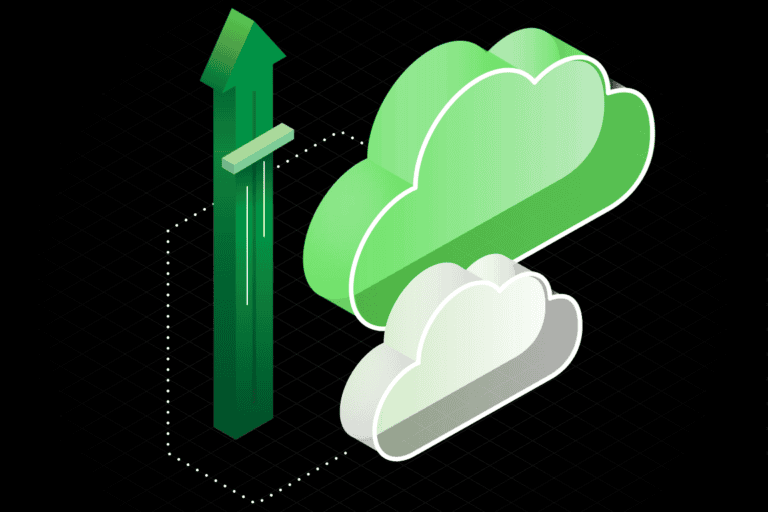Seagate, renowned for its hard drives for over four decades, has recently ventured into the cloud computing sector. The company initiated its cloud journey three years ago in America and has now expanded to Europe with the inauguration of its first data center in Frankfurt, Germany. Why is the data storage specialist still expanding its offerings to the cloud, and how can it compete with the offerings of the dominant cloud players?
Seagate’s hard drives can already be found in the data centers of the large U.S. cloud players, where they are combined with hardware from other providers. At these players, you will not see an entire data center with Seagate hardware. This has now changed with Seagate’s first European data center in Frankfurt. From this location, the company aims to offer cloud data storage solutions for Western Europe and the Benelux countries. The service, named Lyve Cloud, is expected to expand from this region, eventually establishing local infrastructure in other European nations.
Optimizing growth through phased rollout
Lyve Cloud is not an entirely new offering. Seagate launched it in America three years ago, and now, coinciding with the company’s 45th anniversary, the cloud storage service is expanding to continental Europe. At least, that is true if Europe is counted as it is today. This means England is not counted, as the company already opened a data center in London two years ago.
This phased approach to global rollout demonstrates Seagate’s strategic decision-making process. About the new region in Frankfurt, Vincent Oostlander, responsible for the solution business at Seagate, was happy to elaborate on the expansion to Germany. He also mentioned the reason for the gradual rollout: “We see steady growth as something more manageable.”
We agree with this reason. To compete with the offerings of the big, well-known, and established U.S. players, we recognize a strong brand presence is needed in the first place. Even then, entering a market dominated by established players can be challenging. By opting for a phased rollout, Seagate can potentially mitigate risks associated with market entry.
Providing clarity on cloud costs
The market entry, however, seems to have gone very well. Its expansion into Europe is a clear illustration of the success of the offering in other areas. According to Oostlander, Lyve Cloud addresses key market pain points: “We often hear that the market is struggling to estimate cloud costs. These are often opaque and unpredictable, giving companies uncertainty about the final cost at the end of the month.” Seagate developed its offerings in response to these concerns.

Add to these pain points the concerns around vendor lock-in, and the result is Seagate’s offering. Their offering allows companies to transfer data in and out at no cost. “Other cloud providers just let companies upload data to the cloud and charge a substantial fee from the moment companies want to work with the data. Even for data removal. This can be costly for businesses that store data in the cloud without frequent use.”
Vincent Oostlander, solution business manager at Seagate
The costs for storing the data remain with the cloud offering from Seagate. Companies can also optimize costs through storage management. Oostlander explains that the solution operates with different tiers. Data that won’t be accessed for a while but may be valuable in the future can be stored in a “cold” tier. While this tier has higher redundancy, it comes at a more favorable price point. This tier is gaining importance due to the growing use of AI within companies, where training data sets from five and seven years ago are also being deployed.
Laggards on cloud adoption
According to Oostlander, the biggest buyers of the Lyve Cloud are the healthcare industry, universities, and their associated research centers and media. Consequently, IBC2024 in Amsterdam proved to be an ideal platform for Seagate to introduce Lyve Cloud in Europe.
An announcement between people from the media industry. An industry that still lags behind on cloud adoption, but can, therefore, also learn from the mistakes made. In recent years there has been a clear a shift away from the idea that all data should be cloud-based, as initially advocated by cloud providers. Oostlander observes that the media industry is acknowledging these past missteps and opting for a hybrid model from the outset..
“A hybrid cloud model is generally the best approach. The cloud can then provide value when storing massive data sets. In healthcare, for example, this could be a dataset of blood samples. The cloud is particularly valuable for spontaneous data storage needs, eliminating the need for expensive hardware solutions,” Oostlander says.
Expansion in Europe appears feasible
In Europe, companies with such needs can now turn to Seagate. Currently served from Germany but potentially from closer data centers in the future. “We definitely intend to serve the core connections in Europe,” he says. For Benelux customers, this could mean the addition of data centers in strategically important locations like Amsterdam and Paris.
Environmental concerns have become increasingly significant in the data center world, especially with the rise of AI. Solutions adopted by players like Google and Amazon include the use of renewable energy sources and water recycling.
As a hard disk drive specialist, Seagate is investing in economical manufacturing processes for the hardware used in data centers. “Our latest Mosaic 3+ generation reduces the energy requirement per terabyte by about a third. Simultaneously, we’re striving to maximize capacity, currently at 30 terabytes. We have already made higher capacity available for large U.S. cloud players, and it should become available for European data centers early next calendar year.”
Hardware rental
Leveraging over 40 years of expertise in hard drives, Seagate will deploy its own hardware in Europe for Lyve Cloud. This means the company is expanding beyond hardware sales into hardware rental. This branch has recently expanded geographically into Europe, allowing companies from regions like the Benelux to store data closer to home.
The number of companies that prefer not to purchase cloud services from established cloud players appears to be huge. That shows the success of Lidl’s cloud: European alternative to AWS, Azure and Google was born inside Lidl
